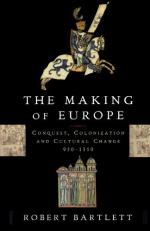|
This section contains 4,390 words (approx. 15 pages at 300 words per page) |

|
Legislation and Institutions. Law in eighteenth- and nineteenth-century Europe was a vast system of social controls by which the propertied elite maintained a rigid stranglehold on society and social development. These laws could be quite harsh—violation of any one of the more than one hundred antipoaching laws comprising the Black Act (1723-1823) in Great Britain, for example, could bring a death sentence. Secular courts, such as the assizes in Britain and the parlements in France, determined the guilt or innocence of accused criminals in trials that made increasing use of witnesses and evidence. The Prussian judiciary was the besteducated in Europe. The crown selected judges on the basis of competence, not social rank. Thus, besides being highly competent, the Prussian judiciary was also the most socially mixed in Europe. More then two-thirds of Berlin's judges...
|
This section contains 4,390 words (approx. 15 pages at 300 words per page) |

|




